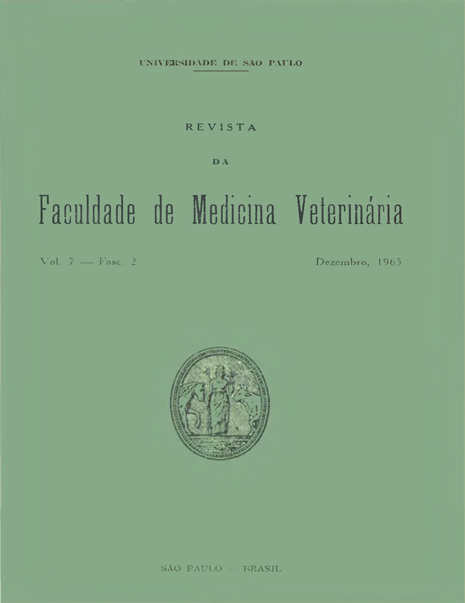The mean age at first calving in zebu cattle heifers (Indubrasil), raised in range condictions
DOI:
https://doi.org/10.11606/issn.2318-5066.v7i2p337-340Keywords:
The article has no keywords.Abstract
This work was carried out from a large herd of Zebu Cattle (Indu-Brasil breed) — situated in Araçatuba, SP, where the cattle has been raised in range conditions. As a managerial practices the heifers are put together with the sires, in a freely consorting plan, when they are 2 to 2,5 years-old. With an idea to gather some added information about this subject, it was considered to be worthwhile to observe if heifers which were permitted to run with the male, in the herd, younger than 2 to 2,5 years old, could calve their first youngs at an earlier age than those which were older when mated for the first time. The heifers were selected from the herd at random and were consorted with the sires (ratio = 1:25), at different ages, in two groups as follows:
Group I) Eighty-two heifers with the age of 12 to 18 months, and
Group II) Eighty-five heifers with the age of 20 to 36 months.
The null hypothesis, therefore, was that females of the first group should bore their first young at the same mean age of those heifers pertaining to the second group. The alternative hypothesis would be that the females of the first group should produce their first youngs earlier than those heifers of the group II. The results were as follows: (the level of significance was 0,05)
Group I:
X = 1.262,30 days; S = 167,70 days and V = 13,29%
Group II:
X = 1.205,93 days; S = 141,33 days and V = 11,72%
It is clear that the difference between the mean ages at the first calving, in the two groups, is not significant. The confidence limit for the true difference between those means was:
C (9,39 < ma — mb < 103,35) = 0,95
Using a gestation length of 290 days, the heifers from the group I should have been mated, approximately when they were at the age of 2 years, 7 months and 28 days. Hence, it appears that it is not advantageous to have the heifers mated in an earlier age than those which are 2 to 2,5 years old.


